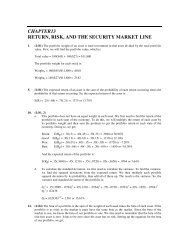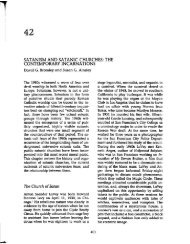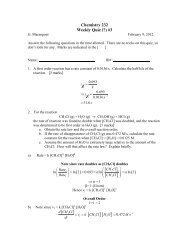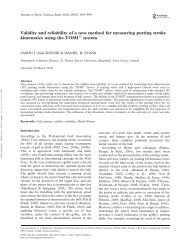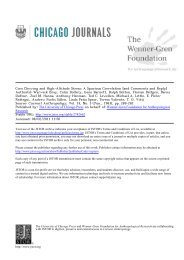ÉTIENNE GILSON AND THE ACTUS ESSENDI
ÉTIENNE GILSON AND THE ACTUS ESSENDI
ÉTIENNE GILSON AND THE ACTUS ESSENDI
Create successful ePaper yourself
Turn your PDF publications into a flip-book with our unique Google optimized e-Paper software.
Dewan: Gilson and the actus essendi<br />
esse. 55 Thus, it is inasmuch as the form is found more on the side of the subsistent<br />
thing, the thing to which it belongs to be, that it can be viewed as a principle or<br />
cause of esse. The form, as to its own nature, is closer to the subsistent thing;<br />
created esse is that which is furthest from it; as Capreolus says:<br />
... Since the esse of the creature least of all subsists, it is not properly created or<br />
annihilated, neither is nor is not, neither begins to be nor cease to be; but all such<br />
things are said about that which is through that esse, and not about esse itself. 56<br />
He says it “least of all subsists” because he wants us to contrast it with other nonsubsistent<br />
items in the metaphysical analysis of a material being. The form which<br />
is the principle of esse does not subsist either, but it is not at as great a remove<br />
from the subsisting thing as is the esse. Esse is of such a nature that it can subsist<br />
only in God. Form is of such a nature that it can subsist in the higher creatures. 57<br />
Thus, my suggestion is: if Gilson is attempting to look beyond the actual<br />
existence of the substance or essence, to something else called “esse,” might that<br />
not have something to do with his judgment that no one has ever proved the<br />
distinction between a caused substance and its esse?<br />
One stands in danger, under the Gilsonian approach, of losing sight of the<br />
ineluctable contribution of essence. Without the essence, the act would not be an<br />
act of being. Esse is the act of the essence. Esse and essence are given together<br />
by the higher cause, with essence having the role of receiver, and esse the role of<br />
the formal and received. This is so true that form or essence is presented by<br />
Thomas as a divine instrument in the causing of esse. 58<br />
Gilson’s general argument, as to the theme we are presently following, is that<br />
all the arguments in St. Thomas’s works for the distinction between being and<br />
essence presuppose the Thomistic notion of esse. This is ambiguous. One can<br />
have no quarrel with this, if by “the Thomistic notion of esse” one is referring to<br />
55 De Potentia 2.1:<br />
... natura cuiuslibet actus est quod seipsum communicet quantum possibile est. Unde<br />
unumquodque agens agit secundum quod in actu est. Agere vero [lege: enim] nihil<br />
aliud est quam communicare illud per quod agens est actu, secundum quod est<br />
possibile.<br />
56 Capreolus says:<br />
... Cum ergo esse creaturae minime subsistat, non proprie creatur, aut annihilatur, aut<br />
est, aut non est, aut incipit aut desinit; sed omnia talia dicuntur de illo quod est per<br />
illud esse, et non de ipso esse. [I, 327a]<br />
57 Cf. e.g. ST 1.12.4 (64b17-22):<br />
... But some things are, whose natures are subsisting by themselves, not in any<br />
matter, which nevertheless are not their own esse, but are possessors of esse [esse<br />
habentes]; and at this level are incorporeal substances, which we call “angels.”<br />
The subsisting nature of the angel is called “form” at ST 1.50.2.ad 3 (317b12-23), and at<br />
ST 1.50.5 (321a14-16). - The human soul is subsisting form: ST 1.75.2, 5 and 6.<br />
58 De Potentia 7.2.ad 10.<br />
89



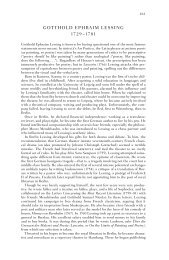
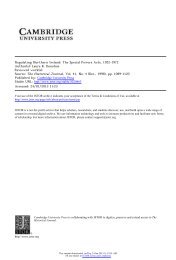


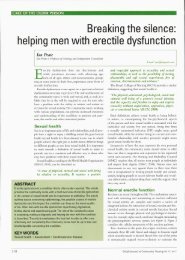
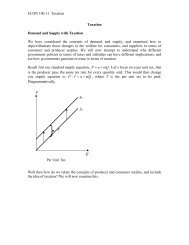
![The Rink - Cyril Dabydeen[1].pdf](https://img.yumpu.com/21946808/1/155x260/the-rink-cyril-dabydeen1pdf.jpg?quality=85)

